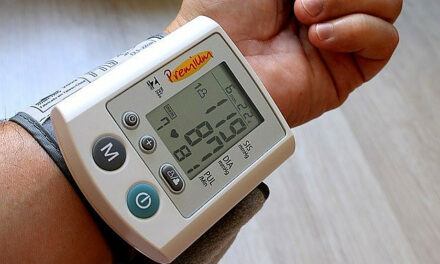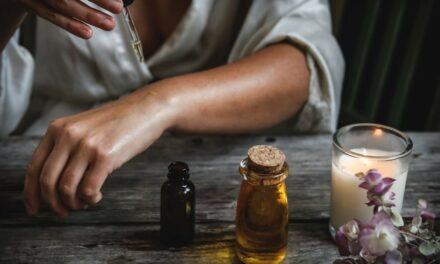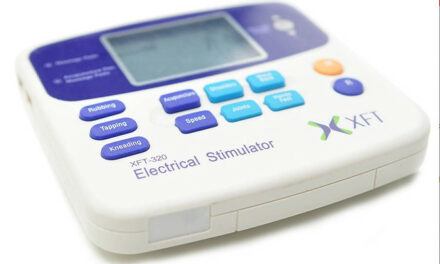As technologies advance daily, so does its influence affect every area of our lives, including healthcare. In the field of orthopedics, advancements in health technologies have led to innovative solutions like Air Casts, offering improved wound healing and pain reduction for foot and leg-related problems. In this comprehensive guide and review, we will explore the world of Air Casts, including their various types, indications, benefits, and tips for optimal use and maintenance.
Here, we will get to know how the field of orthopedics is taking advantage of technology to help people using air cast to improve their wound healing and minimize bone pain.
This Guide and Review of AirCasts, AirCast Ankle Braces and AirCast Boots will reveal all aspects of air casts to help you decide the best Aircast for your leg condition and how they can help you compared to a regular cast.
Let’s dig into the topic by defining Air Casts – What is an Air Cast?
What is an Air Cast?
If you have ever been to a hospital for foot sprain or fractured bone or any other foot or leg related problem, you will note that the doctor often encases the feet with a splint wrapped in gauze so that the sprain won’t be stressed or exposed to external pressure.
An air cast is a medical device or instrument that cushions the leg or foot by enclosing it with pneumatic splints or air cells, reducing pain and protecting it from external pressure.
The main idea behind the use of an air cast is to keep the leg or foot still and also to avoid pressure hereby reducing pain, swelling and generally accelerating the healing process.
Components of the Air Cast
Air casts are primarily made up of pneumatic splints or air cells that are surrounded by a rigid, flexible casing depending on the type of air cast.
They can also come with pumps for inflating the air cells.
| Component | Description |
|---|---|
| Pneumatic splints/air cells | Provide cushioning and support |
| Rigid, flexible casing | Encloses and stabilizes the air cells |
| Air pump (optional) | Allows inflation of air cells for a custom fit |
Why Should You Use an Aircast for Foot and Leg-related Problems?
Here’s why.
Removable
Unlike the traditional cast that is custom-made for you, Air Casts are removable, ideal when you want to take a bath, sleep etc.; hence they are more practical and fit into our everyday routine. Though, care should be taken to avoid any pressure by making sure that one seats down before removing them.
Since they are removable from your leg, they can be cleaned and aired. Also, they can be taken out before bathing so that water won’t touch it.
Tip: Here’s the Shower Chairs, Seats, Benches and Stools Selection Guide.
Flexible or Lightweight
The materials that make up an air cast are lightweight and sometimes made with stretchable material making the individual walk around freely with less burden and not feel weighed down by them.
Adjustable
Air Casts have straps and pumps that one can adjust to their choice. Note that while adjusting the straps or pumping air cells, care should be taken to avoid making it so tight to keep from straggling.
Here is our comprehensive comparison of Air Casts with traditional casts.
| Aspect | Air Casts | Traditional Casts |
|---|---|---|
| Removability | Yes, can be removed for certain activities | No, fixed in place until removed by a healthcare professional |
| Weight | Lightweight and flexible | Heavier and restrictive |
| Customization | Adjustable straps and air cells | Custom-made for the individual |
| Cleaning | Can be cleaned and aired | Difficult to clean and may cause skin irritation |
| Mobility | Allows some degree of mobility | Limits mobility and daily activities |
Indications – When to Use an Air Cast?
An air cast should be recommended by a medical doctor.
Here are the conditions that will warrant an aircast:
● Sprain or fractured bone
● Foot swelling or Edema of the foot
● In foot disorders- like severe cases of high arch (Pes Vagus), heel pain, arch pain.
● Postoperative (after surgery) immobilization
● Soft tissue injuries, and
● Many other leg conditions and circumstances
See the below table, which suggest recommended type of Air Cast for each condition.
| Condition/Injury | Recommended Air Cast Type |
|---|---|
| Sprain or fractured bone | AirCast Air-Stirrup Ankle Brace |
| Foot swelling or Edema | AirCast AirLift PTTD Ankle Brace |
| Foot ulcers | AirCast Diabetic Walking Boot |
| High arch (Pes Vagus) | AirCast AirHeel |
| Heel pain or Plantar Fasciitis | AirCast AirHeel |
Tip: Heel pain is a common symptom of Plantar Fasciitis, but Foot Massaging can help you to relieve that pain.
Contraindications – When Not to Use an Air Cast?
It is not in all cases that air cast is recommended, so it is important to adhere to the instructions of your health care provider before your decision to use one.
Below are the reasons why you may not use an air cast:
● During driving, in some states or countries, it’s illegal to drive with a cast as this can cause an accident.
● If your healthcare provider permits you to take off your air cast for a bath, either take off the air cast or wrap plastic nylon over the air cast so that water won’t get into it but do so while in a seating position.
Note: Some air casts are for protective purposes and can be taken off at whim, and you don’t have to live with it, just follow the guidance of your healthcare professional.
Variations – Types of Air Casts
There are different varieties of Air Casts and knowledge about them will help you to know when to use them.
The Air Cast types are:
● AirCast AirHeel (Ankle Support Brace with Stabilizers)
Indications:
Plantar fasciitis, forefoot pain, neuromas, Achilles tendonitis, and arch pain.
Components:
Two Velcro straps, stretchy breathable material, and a large air cushion for the foot arch.
How it works:
The air cushion relieves pressure on the ball of the foot and heel, reducing pain and swelling.
● AirCast Air-Stirrup Ankle Brace
Indications:
Ankle sprain, post-ankle surgery care, and ankle swelling.
Components:
Semi-rigid casings with air cells, long straps, and a breathable mesh liner.
How it works:
The casings provide ankle support and prevent rollover while the air cells reduce swelling and promote blood circulation.
● AirCast AirLift PTTD Ankle Brace
Indications:
Posterior tibial tendon dysfunction (PTTD), causing a flattened arch.
Components:
Air cell for arch support, semi-rigid stirrups, and long straps.
How it works:
By inflating the air cell, the arch is lifted, alleviating PTTD symptoms and reducing swelling.
● AirCast A60 Ankle Brace
Indications:
Ankle support and protection during sports.
Components:
Lightweight stabilizer molded at 60°, breathable fabric, and a single strap.
How it works:
Provides ankle support for sports activities and walking.
● AirCast AirSport Ankle Brace
Indications:
Sprained ankle prevention and management, ankle instability, and tarsal tunnel syndrome.
Components:
Velcro straps, plastic stirrups, and semi-rigid casing with air cells.
How it works:
The combination of semi-rigid shells and air cells provides support and protection.
● AirCast SP (Short Pneumatic), XP (Extra Pneumatic) and FP (Foam Pneumatic), XP DiabeticWalking Boots
Indications:
Various foot and leg injuries, post-surgery care, and diabetic foot conditions.
Components:
Trimmable semi-rigid casing, customizable air cells, straps, and rocker sole.
How they work:
Immobilize and support foot or leg injuries while allowing mobility.
● AirCast Diabetic Walking Boot
● AirCast AirSelect Standard, AirSelect Elite and AirSelect Short Walking Boots
Let’s put what we learnt so far into a table.
| Air Cast Type | Indications |
|---|---|
| AirCast AirHeel | Plantar fasciitis, forefoot pain, neuromas, Achilles tendonitis, arch pain |
| AirCast Air-Stirrup | Ankle sprain, post-ankle surgery care, ankle swelling |
| AirCast AirLift PTTD | Posterior tibial tendon dysfunction (PTTD), causing a flattened arch |
| AirCast A60 | Ankle support and protection during sports |
| AirCast AirSport | Sprained ankle prevention and management, ankle instability, tarsal tunnel syndrome |
| AirCast Walking Boots | Various foot and leg injuries, post-surgery care, diabetic foot conditions |
Let’s explore each to learn more about them.
Air Cast Air Heel (Ankle Support Brace with Stabilizers)

Indications – When to Use an AirCast AirHeel?
They are recommended if you are suffering the following conditions:
- Plantar fasciitis,
- Forefoot pain,
- Neuromas,
- Pain in the heel,
- Achilles tendonitis,
- arch pain, etc.
Components
It is made up of the following components.
● Two Velcro straps
● Stretchy breathable material
● Big Air cushion or air cell that lies in the bottom in the foot arch when worn
How Does An AirCast AirHeel Works?
It is recommended to be worn an AirCast AirHeel over socks and not on bare feet.
The air heel is slipped on just like you would do with socks, it is adjusted so that the air cushion will lie beneath the foot in the arch area.
The air cushions play the role of keeping pressure off the ball of the foot or heel, especially if you are suffering from plantar fasciitis and also keeps protecting the foot arch by cushioning it.
Air heels come in various sizes and in selecting one, choose one that fits snugly but not so tight; it can be worn comfortably with all shoes.
Plantar fasciitis and AirCast AirHeel
Plantar fasciitis is inflammation of the sole of the foot, and it is because of overuse of the foot when running or doing high impact aerobics. This causes heel pain or forefoot pain. Air heels reduce this pain, arch pain, swelling, and it also stimulates circulation around that area.
Air Cast Air-stirrup (Ankle Brace)

Indications – When to Use an Air Cast Air-stirrup?
It is recommended for the following conditions:
- Ankle sprain,
- After ankle surgery,
- ankle swelling and instability etc.
Components
● Two semi-rigid casings or shells that consists of air cells each with a small strap connecting them.
● A long single or double strap
● Breathable mesh liner (optional in some brands)
● Thin tube
How Does An Air Cast Air-stirrup Works?
Place the air cast air heel on the ground and step on the small strap connecting the two casings, the casings are raised up one on each side of the ankle at the lateral and medial side, and the strap is wrapped around the ankle making it easy to wear.
Care is taken so that the air heel fits snugly and not tight, if there is space between the casing and ankle, raise the air cell and adjust the bit of strap located beneath. The casings or shells support the ankle and help prevent rollover.
The air cells steadily compress the ankle, thereby reducing swelling and increasing blood circulation around that area.
If the air cell is not pre-inflated or maybe the air cell is flat, a tube which the air heel comes with is attached to a part of the air cell meant for the tube and air is pumped in.
Like the Air heel, Air-stirrup comes in all sizes and can fit comfortably in all shoes. Therefore, the air-stirrup reduces ankle pain, swelling and accelerates healing.
Air Cast Airlift PTTD (Ankle Brace)

Indications – When to Use an Air Cast Airlift PTTD?
The acronym “PTTD” means posterior tibial tendon dysfunction.
This air cast airlift was explicitly made for the treatment of symptoms caused by posterior tibial tendon dysfunction.
Components
● air cell or air bladder, located beneath the foot arch
● bulb located on the sides
● Two Semi-rigid stirrups
● Two long straps
● Air pump
How an Air Cast Airlift PTTD Works?
Slip your foot in just like you would when wearing a sock, wrap the straps around the ankle.
Using the air pump inflates the air cells located beneath the foot arch area, this will raise the arch height.
Posterior Tibial Tendon Dysfunction (PTTD) and Air Cast Airlift
The posterior tibial tendon is one of the significant structures that support the foot. It supports the foot during walking.
PTTD is a condition that results from changes in the posterior tibial tendon, limiting its ability to the arch causing flat foot.
The PTTD is not acquired from birth but during adulthood, and it can occur in both feet.
Symptoms of PTTD include:
- pain,
- inflammation or swelling,
- flattening of the arch,
- the rolling of ankle inward.
Air cast Airlift PTTD by boosting up the fallen arch, it relieves swelling and generally relieves the symptoms of PTTD.
Air Cast A60 (Ankle Brace)

Indications – When to Use an Air Cast A60?
It is recommended for use as ankle support and protection during sports.
Components
● lightweight stabilizer molded at 600
● lightweight, breathable fabric.
● Single strap
It is ideal for sports activities like tennis, soccer, basketball and also for walking.
Air Cast Airsport

Indications – When to Use an Air Cast Airsport
- sprained ankle (prevention and management),
- ankle instability,
- tarsal tunnel syndrome.
Components
● Velcro straps
● Plastic stirrups
● Semi-rigid casing or panels containing air cells.
How an Air Cast Airsport works?
It combines semi-rigid shells and air cells to provide support and comfort on both sides of the ankle. It is designed to have an automatic heel width adjustment for ease during application.
Just like you when wearing a shoe, step into the air sport, then cross wrap the strap around the ankle.
This air cast model is slightly bulkier than its sister product A60. It has varied functions, some of which are designed to provide maximum support for weak to a mildly sprained ankle. It is a guide against rollover.
It is ideal to be used during sports activities or walking as it provides extra protection.
Air Cast Walking Boots
These walking boots are designed to support and protect foot or leg injuries while allowing or aiding mobility.
It consists of four varieties:
● Air cast SP (Short Pneumatic) walking boots
● Air cast XP (Xtra Pneumatic) walking boots
● Air cast FP (Foam Pneumatic) walking boots
● Air cast XP diabetics walking boots
General features of Air Cast Walking Boots
They include:
● Trimmable semi-rigid casing that fits all cast size
● Customizable air cells or bladders which you can pump to fit all sizes
● Straps that are spaced equally to prevent swelling or edema
● Rocker sole that was designed to act like the natural way we walk
● Hand pump
● Valves
General Precautions
● Do not over-inflate the air cells, it can cause skin irritation in individuals with diabetic foot-related problems, so it is necessary air cell compression with any visual skin changes.
● Patients without sensation (post-surgery anesthesia) should be checked frequently for skin irritations, wound or ulcers.
● Care should be taken when walking on wet or slippery surfaces to avoid accidents.
How do the AirCast Walking Boots work?
These guides are applied to all types.
In a seated position, first put on a sock undo the straps and remove the first casing or panel.
Undo the inner flaps, i.e. the toe cover and foot flaps, slip in your foot, with your heel at the back of the Aircast and redo the flaps and adjust till it fits.
Put back the front panel or casing and starting from the bottom to up, redo the straps and adjust till it fits snugly.
The walking boots have valves at the sides through which air can be pumped in using the hand pumps, enhancing compression that aids in the reduction of swelling and fit, this function varies slightly among walking boots types.
Air Cast SP Walker

Indications – When to Use an Air Cast SP Walker?
- for healing foot,
- ankle injuries,
- soft tissue injury,
- after surgery care,
- fractured metatarsals,
- fibular fracture etc.
Components
● short pneumatic (SP) walking braces
● Hard plastic casing or panel for immobilization
● Air cast hand pump
● Rocker soles
● Lightweight semi-rigid casing or panel that contains pre-inflated air cells and another two adjustable air cells located at the **malleoli, which can be inflated individually for a snug fit and to secure support.
How an Air Cast SP Walker Works?
Refer to the general instructions for walking boots.
Air Cast XP Walker
Indications – When to Use an Air Cast XP Walker?
- ankle injury,
- post-surgery care etc.
Components
● Cotton socks
● Inflation pump
● Circumferential Semi-rigid pneumatic casings
● Straps etc.
How an Air Cast XP Walker Works?
Refer above to the general instructions for walking boots.
Air Cast FP Walker
Indications-– When to Use an Air Cast FP Walker?
- ankle and foot instabilities,
- severe ankle sprains,
- post-surgery care and removal.
Components
● lightweight semi-rigid casing
● Two custom pre-inflated air cells
● Breathable foam liner
● Rocker sole
How an Air Cast FP Walker Works?
Refer above to the general instructions for walking boots
Air Cast XP Diabetic Walker

It was made specifically with people with diabetes-related foot issues in mind.
Indications – When to Use an Air Cast XP Diabetic Walker?
- neuropathic ulcers,
- ankle fracture,
- post-surgery use,
- heel pain
Components
● Rocker sole
● Dual-density insole
● Semi-rigid casings
● Air cells
● Inflator or deflator aircast pump
● Have valves on one side
How an Air Cast XP Diabetic Walker works?
Refer above to the general instructions for walking boots
AirCast AirSelect
Air cast Air select series are:
● Air select standard
● Air select elite
● Air select short walking boots
Indications – When to Use an Air Cast Air Select?
- severe ankle or foot injuries
- fractured fibula
How an Air Cast Air Select Works?
Generally, they work in the following way.
● Unfasten the main flaps and remove the front panel.
● Open the toe cover and foot flaps and slip on the socks before wearing.
● Seat in a comfortable position to apply the boot.
● Place your foot in the boot with your heel against the back of the boot.
● Wrap the foot flaps over your foot and toe cover around your toes, replace the front panels.
● Secure the lower straps and upper straps for a proper fit, inflate the air cells.
● Begin on the injured side of the leg by locating the allocated number for the air cells on that side.
● To inflate each air cells turn the selector on the right side of the boot to the appropriate number, number 1 inflate the air cell on the right, number 2 for the left side while number 3 for the back of the boot.
● The lock position should be used once all air cells are inflated; this prevents accidental deflation.
● Once you have turned the selector to the appropriate air cell number, place your finger over the small hole on top of the small hole on top of the large inflation pump, press and release the large inflation pump until the air cell feels snug.
General Components
● Straps
● Removable front panel
● Toe cover and foot flaps
● Socks
● Numbered air cells
● Selector
● Integrated inflator pump
● Release button
● The rocker sole is made from Soft strike technology
The use of air cast air select series accelerates healing, reduces pain and reduces inflammation.
AirSelect Standard Walking Boot
AirSelect Elite Walking Boot
AirSelect Short Walking Boot
To sum up, I have also put up a table to for easy comparison of these instructions.
| Air Cast Type | Application Instructions |
|---|---|
| AirCast AirHeel | Slip on over socks, adjust the air cushion under the foot arch for support and comfort |
| AirCast Air-Stirrup | Step on the small strap to raise the casings on each side of the ankle, wrap the strap around |
| AirCast AirLift PTTD | Slip on like a sock, use the pump to inflate the air cell beneath the foot arch |
| AirCast A60 | Put on like a shoe, secure with the strap for ankle support and protection |
| AirCast AirSport | Step into the brace, cross wrap the strap around the ankle for extra support |
| AirCast Walking Boots | Follow the specific instructions for each type of walking boot to secure and support the leg |
Tips on Cleaning an Air Cast
Here are some tips that will guide in taking care of your Aircast:
● Always air dry your air cast at least once a day or as directed by the doctor.
● Soak one side of the cloth with water, use it to wipe the casing of your Aircast boot.
● For total cleaning, spray the inside of the boot with an odor repellent cleaning liquid. Avoid spraying, if your foot or leg has an open wound or ulcer.
● Before wearing the air cast back, make sure the air cast is dried to avoid odor and irritation
● Follow the instructions as directed by the doctor or manufacturer.
● Avoid soaking the entire Aicast unless directed
● You can take off your air cast and shower if it is approved by your doctor or health care provider, just avoid soaking the leg in hot water.
The below table summarises it all.
| Cleaning Tips | Pumping Tips |
|---|---|
| Air dry the Air Cast daily or as directed by the doctor | Fit the pump at the valves provided |
| Use a damp cloth to wipe the casing | Avoid over-inflating, pump until it fits snugly |
| Use odor repellent cleaning liquid for total cleaning | Some Air Casts come pre-inflated, pump only as needed |
| Avoid soaking the entire Air Cast unless directed | If using a tube, blow air through it for inflation |
| Follow instructions from your healthcare provider or manufacturer | Follow any other instructions provided by professionals |
Tip: Air Relax Leg Compression Massager Boots can help you recover from fatigue and manage leg pains.
Tips For Pumping Your Air Cast
● Fit the air cast pump or tube at the valves provided for it.
● While pumping, don’t pump till it is very tight, this can cut off circulation in that area. Pump till it fits snug.
● Some air cast come pre-inflated so either you pump only a little or not all until the air pressure lowers
● Some air cast pumps are integrated with the air cast system, so they don’t come with a hand pump.
● While pumping air cast with an integrated pump system, put your hand on the hole over it, press and release the pump until the air cast fits.
● If the air cast comes with a tube, blow air through it until your air cast fits.
● Follow any other instructions provided by your health care professional.
Conclusion
Air Casts have revolutionized orthopedic care, providing optimal healing and support for foot and leg-related injuries. It comes in many sizes and types, ensuring that the individual has a proper fit and that every injury is matched with a type of air cast that is best for it.
By understanding the different types and their applications, individuals can choose the most suitable Air Cast for their condition, ensuring a faster recovery and improved quality of life.
Always consult a medical professional before using an Air Cast to receive appropriate guidance for your specific needs.
Tip: Rooke® Vascular Boots Helps You Prevent Leg Ulcers, and Protect and Heal Wounds Fast.















Wow, what an incredibly comprehensive and informative post about air casts for legs and feet!
I’m really impressed with the depth of knowledge you’ve shared here. Air casts are such essential medical devices, and your detailed explanation of their benefits, applications, and proper usage is incredibly valuable. The way you’ve covered various types of injuries and how air casts aid in the healing process shows your expertise on the subject.
Thanks for putting together such a helpful resource for anyone seeking information on this topic!
Dear Russell,
Thank you for your kind and appreciative comment on the article about air casts! As experts on the topic, we’re thrilled to hear that you found the post to be comprehensive and informative.
Air casts are indeed crucial medical devices that provide essential support and aid in the healing process for various leg and foot injuries. It’s gratifying to know that the detailed explanation of their benefits, applications, and proper usage was valuable to you.
Understanding how air casts can be beneficial for different types of injuries is essential for individuals seeking proper support and healing. Our goal as an expert is to provide accurate and in-depth knowledge to help readers make well-informed decisions about their health and recovery.
If you have any more questions or need further information about air casts, their applications, or any other related topics, feel free to ask. We’re here to provide support and assist you in understanding the best ways to utilize air casts for optimal healing and support.
Thank you for your kind words, and I’m glad the article served as a helpful resource for you. Wishing you and anyone else reading the article a smooth and successful recovery with the aid of air casts!